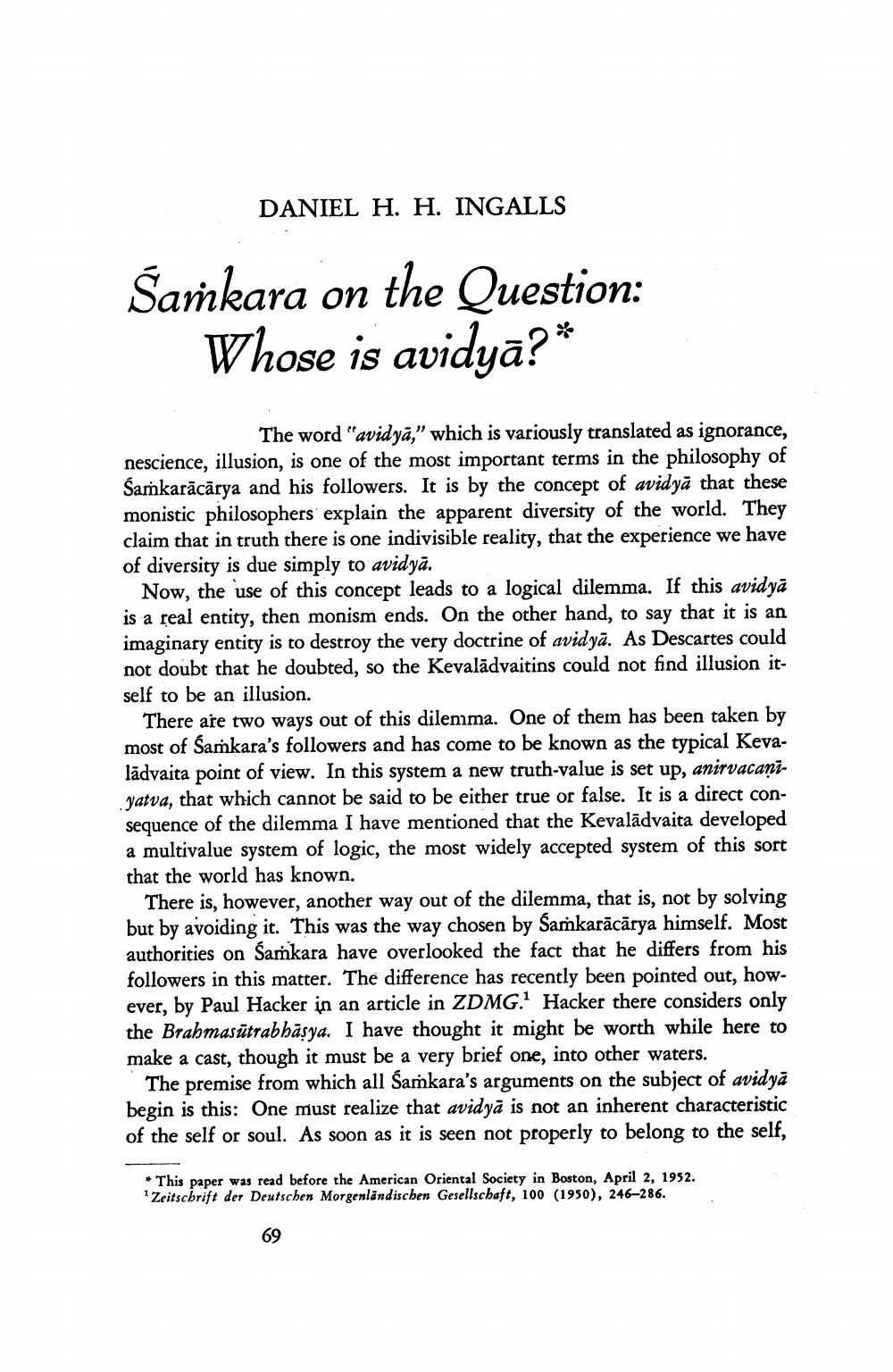________________
DANIEL H. H. INGALLS
Šarkara on the Question:
Whose is avidyā?*
011.
The word "avidyā," which is variously translated as ignorance, nescience, illusion, is one of the most important terms in the philosophy of Šamkarācārya and his followers. It is by the concept of avidyā that these monistic philosophers explain the apparent diversity of the world. They claim that in truth there is one indivisible reality, that the experience we have of diversity is due simply to avidyā.
Now, the use of this concept leads to a logical dilemma. If this avidyā is a real entity, then monism ends. On the other hand, to say that it is an imaginary entity is to destroy the very doctrine of avidyā. As Descartes could not doubt that he doubted, so the Kevalādvaitins could not find illusion itself to be an illusion.
There are two ways out of this dilemma. One of them has been taken by most of Šamkara's followers and has come to be known as the typical Kevalādvaita point of view. In this system a new truth-value is set up, anirvacanzyatva, that which cannot be said to be either true or false. It is a direct consequence of the dilemma I have mentioned that the Kevaladvaita developed a multivalue system of logic, the most widely accepted system of this sort that the world has known.
There is, however, another way out of the dilemma, that is, not by solving but by avoiding it. This was the way chosen by Samkarācārya himself. Most authorities on Saṁkara have overlooked the fact that he differs from his followers in this matter. The difference has recently been pointed out, however, by Paul Hacker in an article in ZDMG. Hacker there considers only the Brahmasutrabbasya. I have thought it might be worth while here to make a cast, though it must be a very brief one, into other waters.
The premise from which all Samkara's arguments on the subject of avidyā begin is this: One must realize that avidyā is not an inherent characteristic of the self or soul. As soon as it is seen not properly to belong to the self,
This paper was read before the American Oriental Society in Boston, April 2, 1952. * Zeitschrift der Deutschen Morgenländiscben Gesellschaft, 100 (1950), 246–286.




